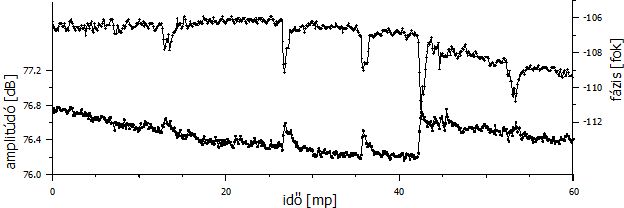ELF-VLF wave phenomena
The ELTE Space Research Group has been involved in the study of electromagnetic waves since its foundation more than fifty years ago. Our focus is the electromagnetic emissions generated in or propagating and interacting in the region surrounding the Earth (ionosphere, plasmasphere, magnetosphere), an anisotropic plasma medium, embedded in the magnetic field. Our research started with ground-based detection of whistlers, then continued with participation in satellite wave experiments and the establishment of the AWDANet global plasmaspheric monitoring network. The range of phenomena under study includes a variety of ELF-VLF (~10 Hz - 10kHz) electromagnetic waves. Wave phenomena that play a role in the dynamics of the plasmasphere form part of what is dubbed 'space weather' research. Our group is involved in registering and scientific analyis, interpretation of waveforms, while also developing theoretical wave propagation solutions and signal processing algorithms.
Whistlers
Whistlers are electromagnetic pulses generated by lightning discharges, penetrating the ionosphere and propagating through the along the field lines of the dominant magnetic field in the inner magnetosphere, returning to the ground on the opposite hemisphere. Whistlers travelling along the field line once and recorded on the ground are called single hop whistlers. The name 'whistler' comes from the low frequency part of the pulse (in the human audible frequency range), which, due to propagation in the dispersive medium, is distorted into a descending tone. Its typical shape carries information about the magnetic field and the plasma density along the propagation path. Thus, whistlers are a primary tool in monitoring the low energy plasma component of the plasmasphere. Whistlers, being large intensity VLF-band electromagnetic waves in the plasma, play an important role in the filling and loss mechanisms of the radiation belt consisting of relativistic particles. Suhc mechanisms are the heating of the plasma and precipitation of particles into the atmosphere due to wave-particle interatctions. Whistlers can be recorded in significant numbers on satellites (fractional hop whistlers), too, which carry information on several hundred or several hundred thousand kilometers of plasma, depending on the position of the satellite.
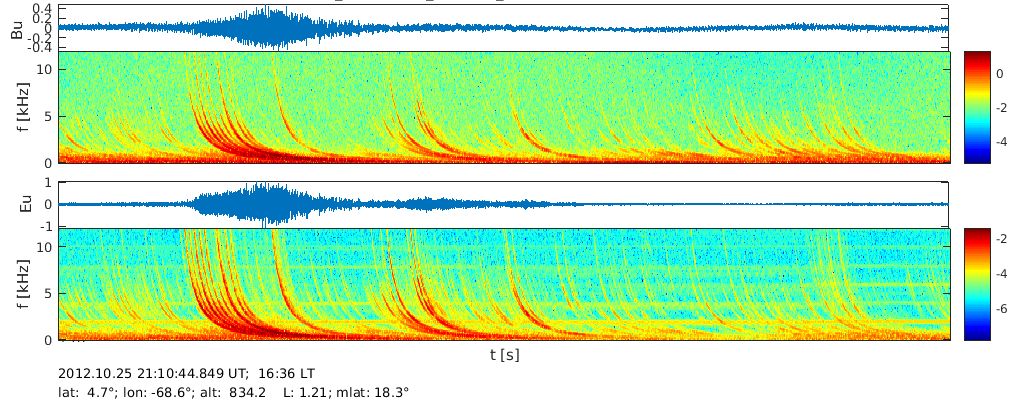
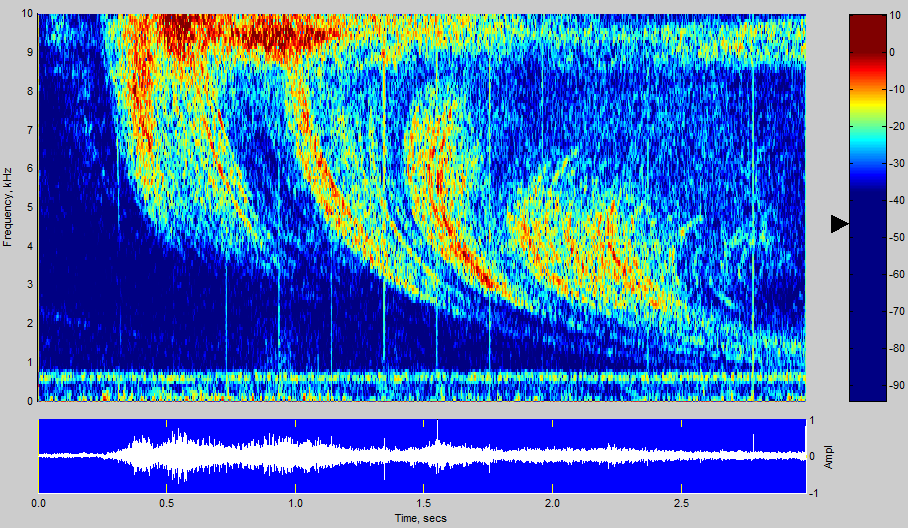
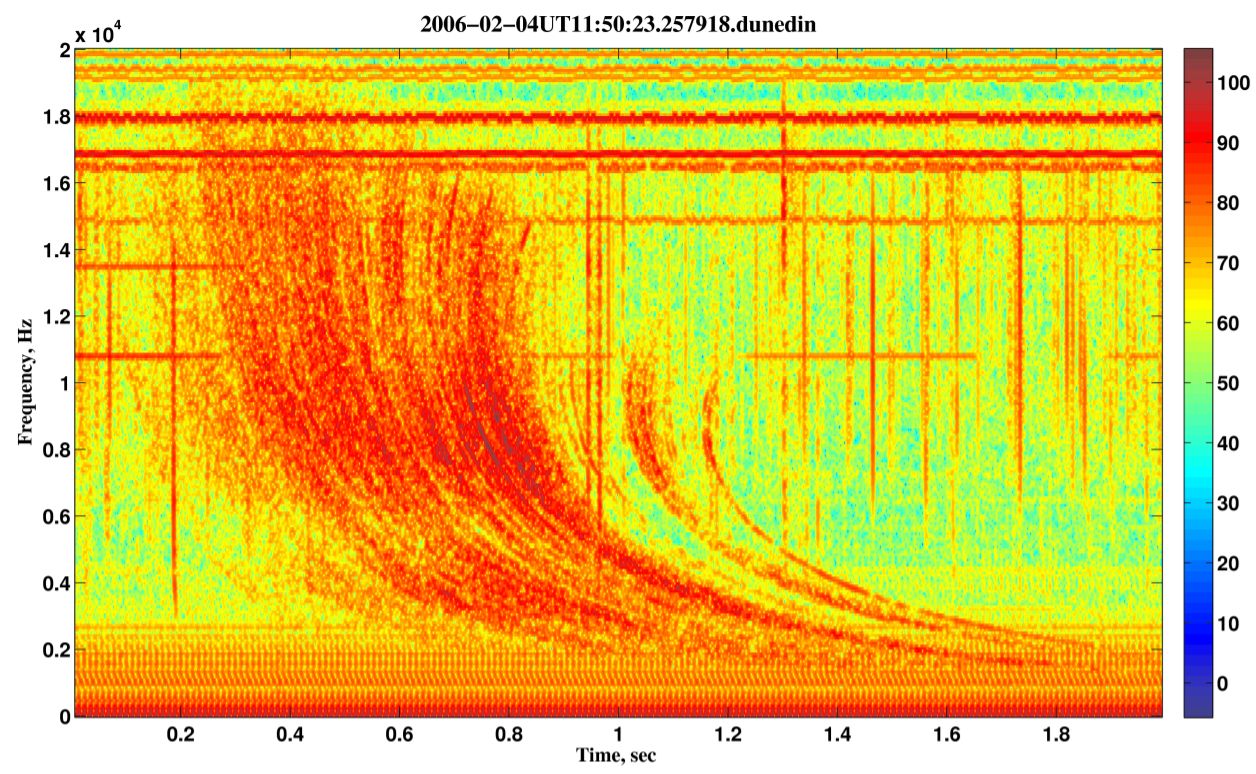
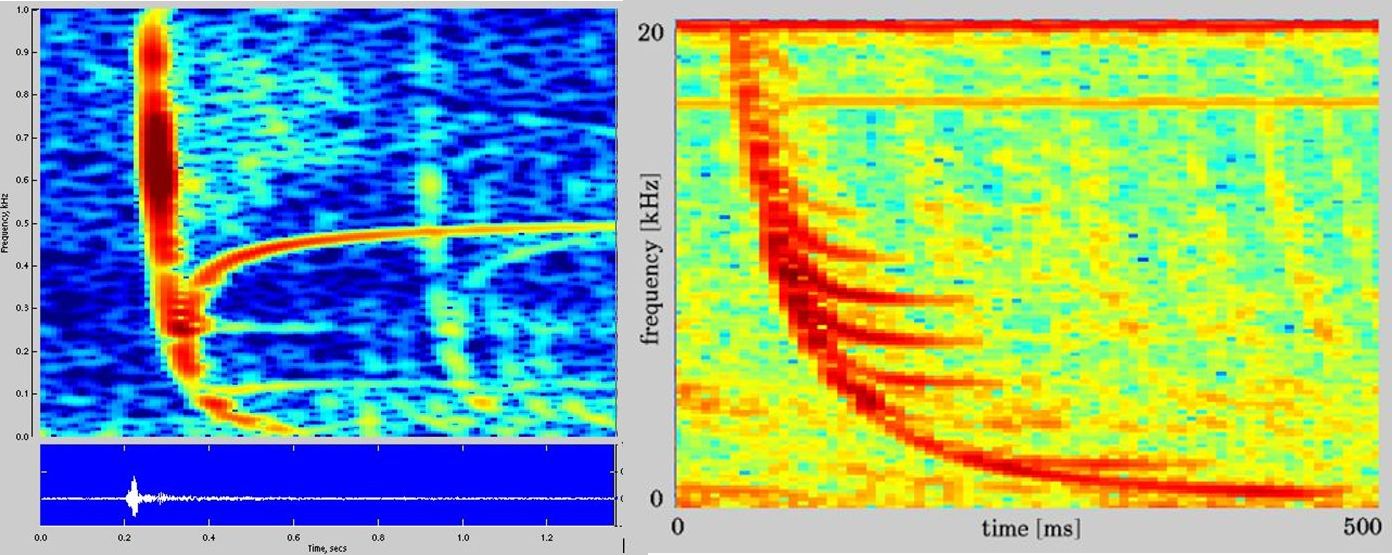
Chorus emissions
Coherent chorus emissions are typically observed as rising/falling tones in the frequency range of 0.1fce<f<0.8fce with discontinuity at 0.5fce where fce is the electron gyrofrequency (Burtis & Helliwell, 1969; Koons & Roeder, 1990; Santolík et al., 2003; Sazhin & Hayakawa, 1992) . These emissions are typically excited during geomagnetic storms close to the magnetic equator in low‐density plasmas near outside the plasmapause. Chorus emissions are known to be generated via wave‐particle interactions with an anisotropic distribution of energetic electrons (few kiloelectron volts to 100 keV) injected from the plasma sheet (Anderson & Maeda, 1977; Kennel & Petschek, 1966; Li et al., 2013; LeDocq et al., 1998; Meredith et al., 2001; Omura et al., 2009; Santolík et al., 2010; Spasojevic, 2014). Anisotropic angular distributions of substorm injected energetic electrons (also called source population; Jaynes et al., 2015) are able to provide free energy for chorus wave excitation (Thorne et al., 2013, and references therein) and cause isotropic pitch angle distribution in the energy range of the interacting particles. The attention of radiation belt modelers recently turned to whistler mode chorus waves due to its role in both accelerating electrons to MeV energies in the Earth's outer radiation belt (Horne & Thorne, 1998; Summers et al., 1998, 2002; Li et al., 2014; Reeves et al., 2013; Thorne et al., 2013) and in pitch angle scattering of electrons into the atmospheric loss cone (Hikishima et al., 2010; Lorentzen et al., 2001; O'Brien et al., 2004; Thorne et al., 2005). The generation of chorus emissions is known to be driven by electron cyclotron resonance (Chum et al., 2007; Katoh & Omura, 2007a, 2007b; Kennel & Petschek, 1966; Kennel & Thorne, 1967; Nunn et al., 1997; Omura et al., 2008; Tsurutani & Smith, 1974).
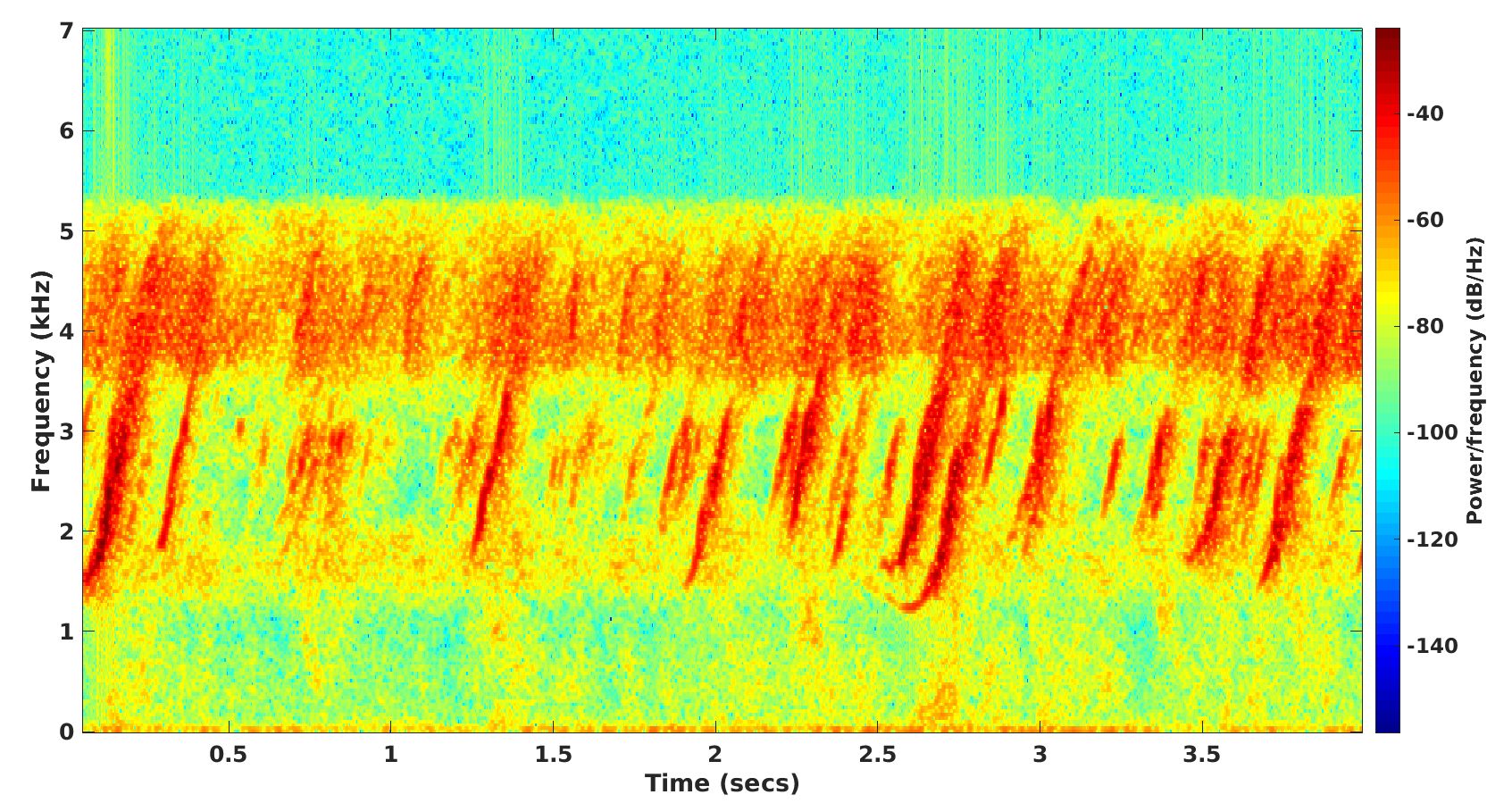
Omura et al. (2008) and Omura and Nunn (2011) proposed a nonlinear wave growth theory for chorus wave generation. They assumed that linear instability excites an incoherent whistler mode wave which triggers the nonlinear process. They found a relationship between measurable characteristics (frequency sweep rate ∂ω/∂t, optimum wave amplitude Ωw0, threshold amplitude Ωth) of rising‐tone emissions and the distribution function of energetic electrons (ratio of number densities of hot and cold electrons Nh/Nc and their parallel and perpendicular thermal velocity, Vt|| and Vt⊥, respectively) participating in wave‐particle interaction. Their theory reveals the amplitude dependency of frequency sweep rate of chorus emissions at the generation region close to the magnetic equator. During quasi‐parallel propagation away from the magnetic equator, wave amplitude of chorus emissions undergo a convective growth due to the gradient of the magnetic field, but ∂ω/∂t is affected only by cold plasma dispersion. During its slightly oblique propagation away from the equator, the gap at 0.5fce is formed by nonlinear wave damping via Landau resonance (Hsieh & Omura, 2018). The above mentioned features of the theory led the AWDANet Team to start to develop a method to derive density and thermal velocities of energetic electrons (source population) from chorus emissions recorded on the ground after they were projected from the ground to the equatorial generation region by a propagation model.
Artificial VLF sources
Apart from the wide range of ULF to VLF wave phenomena generated by natural sources, artificial transmissions are also present in ground-based and also in satellite-based wave mesurements. Most of these signals are emitted by VLF transmitters of naval, navigational and communication purpose. They typically transmit at high power (50kW - 2MW), at known carrier frequencies, allowing an easy identification. Due to their stable amplitudes and phases, they can be used for various scientific investigations.
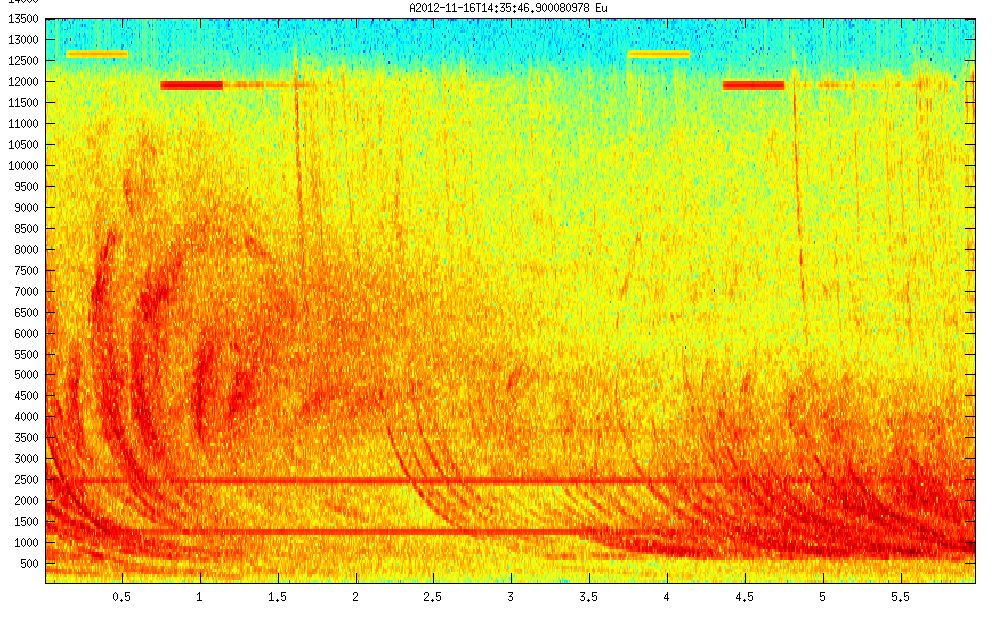
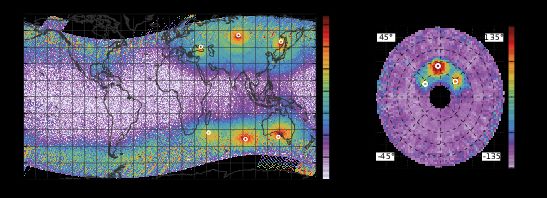
Narrow-band artificial VLF transmissions propagating in the Earth-ionosphere waveguide are perturbed by the transient changes of the lower ionosphere and mesosphere. These changes distort the waveguide along the propagation path, and therefore, the reception and analysis of such signals can be an effective tool in itself for the global monitoring of such effects. We have been using a narrow-band VLF measurement network for the study of deterministic, seasonal, decadal changes in the diurnal cycle (global changes), fast changes linked to solar activity (increased ionization in the lower ionosphere due to flares (solar flare effect, SFE; the current of energetic particles leading to collisional ionization in the polar cusp region, solar proton event, SPE), the precipitation of relativistic radiation belt particles due to wave-particle interaction, which is considered the primary loss mechanism of the radiation belts (space weather), transient ionization caused by cloud-ionosphere discharges (red sprite, blue jet, atmospheric electricity phenomena).

